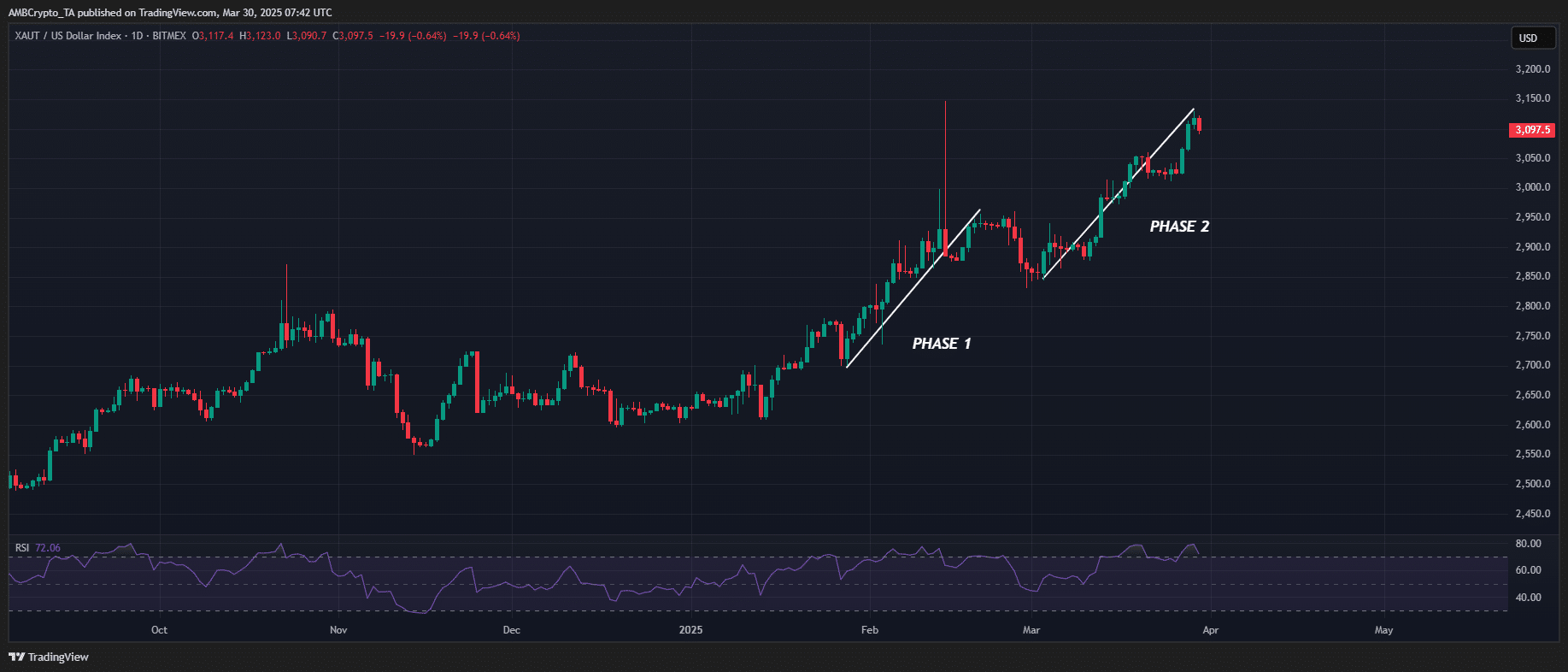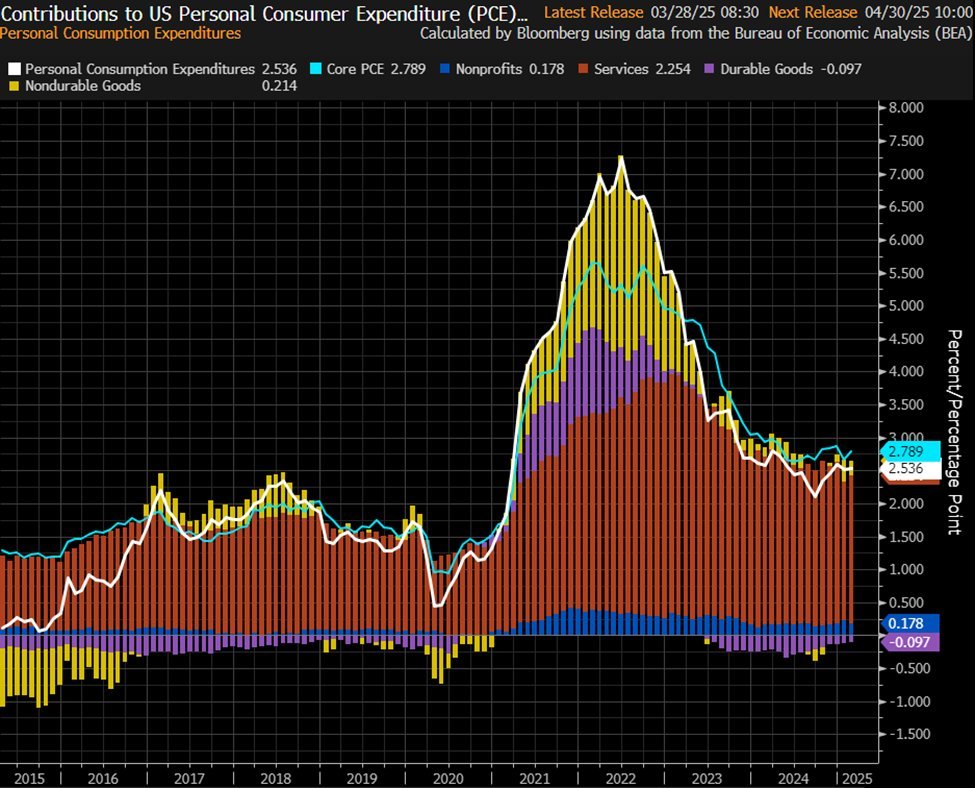-
The shifting dynamics in financial markets may catalyze Bitcoin (BTC) to reclaim its place among risk assets, with potential implications for its price trajectory.
-
As gold (XAU) reaches unprecedented levels, analysts are closely observing if this could trigger a capital influx into Bitcoin.
-
Bank of America’s recent survey indicates a stark disparity in fund managers’ asset allocation, with only 3% favoring BTC over gold.
This article explores the potential for Bitcoin to reclaim the $100,000 mark as investors rotate out of gold into risk assets amidst rising inflation concerns.
Potential rotation from Gold to BTC
Gold’s remarkable 70% surge over the past 16 months has escalated its market capitalization to approximately $20.75 trillion, significantly surpassing the combined valuation of the top ten assets. Many analysts predict that this unprecedented rise could trigger a capital rotation into riskier assets like Bitcoin, particularly if gold indicates signs of a local top.
According to Bank of America’s survey, a significant 58% of fund managers currently maintain an overweight position in gold. In stark contrast, only 3% have allocated funds toward BTC, which limits Bitcoin’s attractiveness as a hedge against macroeconomic turbulence. However, a shift in market positioning could yield an upward momentum for Bitcoin.
Despite this potential upside, macroeconomic volatility continues to play a critical role. Bitcoin is currently trading around 10% below its peak at the start of the year, while gold has witnessed an impressive 17% gain in the same timeframe. The inverse correlation between BTC and gold during this period raises questions about liquidity dynamics.

Source: TradingView (XAU/USD)
Moreover, during two major market-wide corrections, gold managed to achieve all-time highs while Bitcoin failed to hold significant structural support levels, exemplifying an inverse liquidity rotation. Recent pullbacks in gold prices have seen its Relative Strength Index (RSI) dip into a bullish demand zone before once again reaching a record high of $3,097. With the RSI now firmly entrenched in the ‘extreme’ overbought territory, the likelihood of a subsequent market correction increases.
A decrease in demand for gold could unleash a wave of capital movement toward risk assets. This potential shift could provide Bitcoin the opportunity to reclaim its status as a safe-haven asset in the upcoming quarter.
The real test for Bitcoin lies ahead
Gold’s impressive rally from a price of $1,820 in October 2023 to $3,100 this week highlights the metal’s extraordinary resilience. Year-to-date, gold has appreciated by 16%, eclipsing the performance of stocks, currencies, and even the U.S. dollar—despite the challenges posed by rising interest rates.
Conventional wisdom suggests that a stronger U.S. dollar typically exerts downward pressure on gold prices by making Treasury yields more attractive. Yet, contrary to expectations, gold demand has swelled, challenging market norms.
At the same time, inflationary pressures are intensifying, with the one-month annualized Personal Consumption Expenditures (PCE) inflation recently exceeding 4.0%, and the six-month average now at 3.1%. As inflation continues to erode purchasing power, gold’s allure as a safe haven similarly strengthens.

Source: Bloomberg
Within a year, gold has achieved 50 all-time highs, with news outlets like ZeroHedge reporting a surge in physical gold demand amid increasing trade tensions, reinforcing gold’s standing as a macroeconomic hedge. Notably, U.S. gold imports reached $30.4 billion in January, doubling from 2020 pandemic levels.
For Bitcoin to disrupt gold’s reign, the establishment of a Bitcoin Strategic Reserve is paramount. In its absence, high expectations for Bitcoin’s resurgence to $100,000 will largely remain speculative, especially as liquidity constraints continue to impact risk assets.
Although the RSI might indicate overextension in gold, its price action continues to absorb strong demand, diminishing the likelihood of a substantial pullback—especially in light of an approaching key macroeconomic event regarding tariff announcements. In this complex financial landscape, Bitcoin bears a significant structural challenge as gold appears poised to further explore price discovery towards new historical peaks.
Conclusion
In summary, the potential for a capital rotation from gold to Bitcoin depends on several macroeconomic factors, including inflation trends and market sentiment. As Bitcoin navigates this challenging environment, its ability to reclaim $100,000 hinges not only on investor sentiment but also on the broader dynamics of liquidity in the financial markets.







